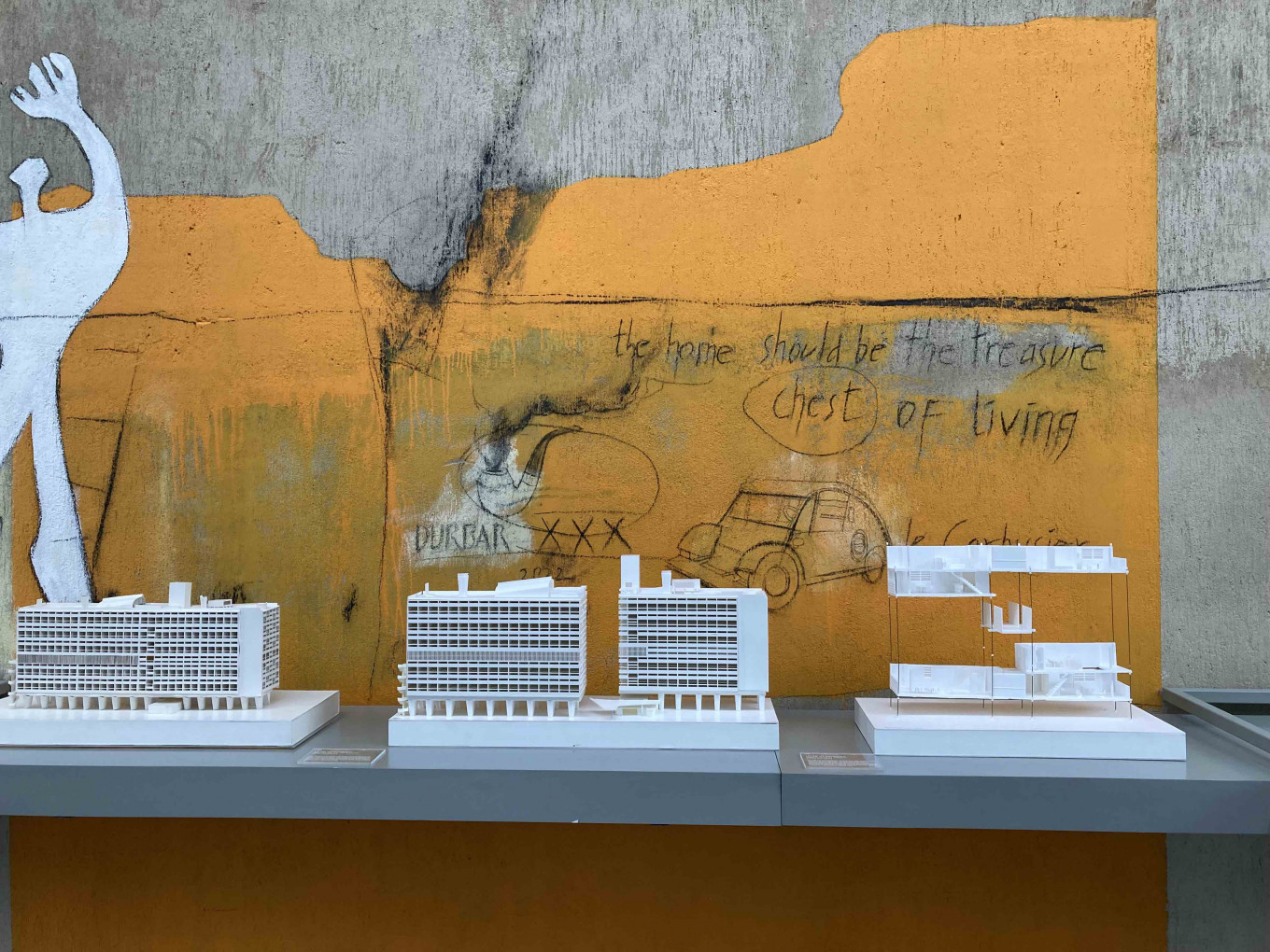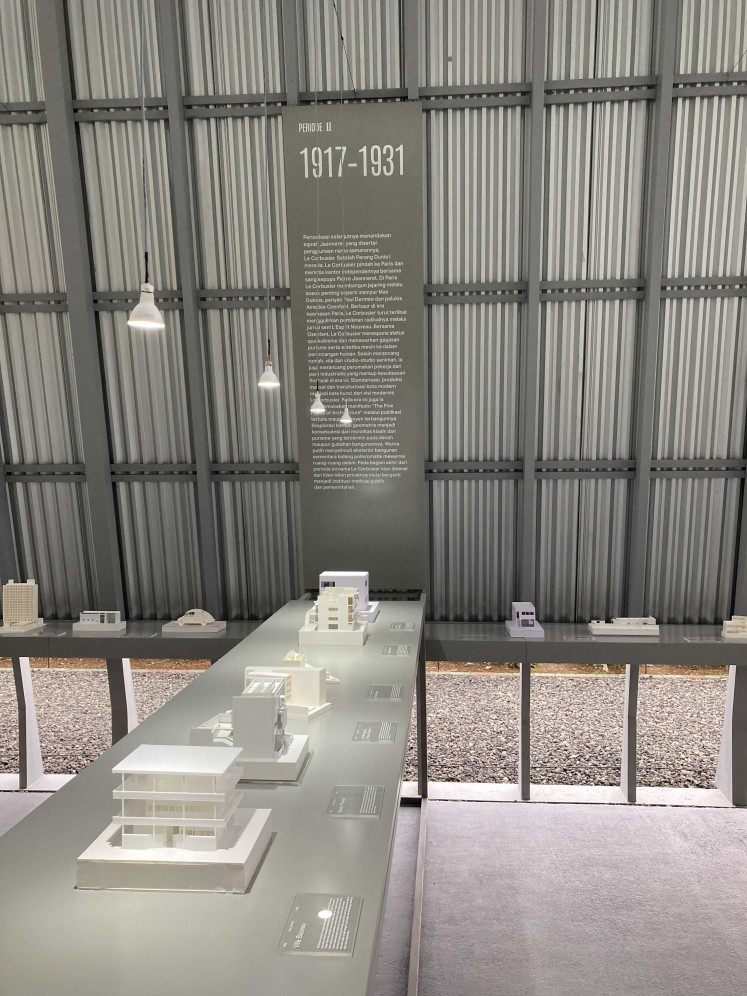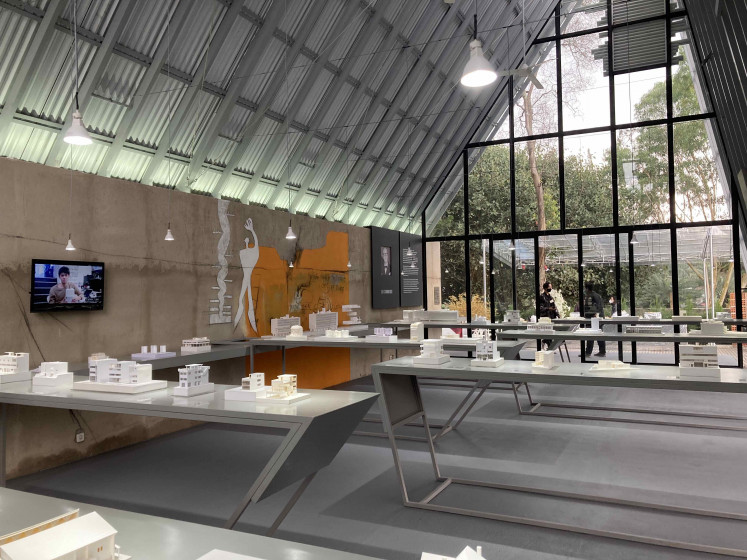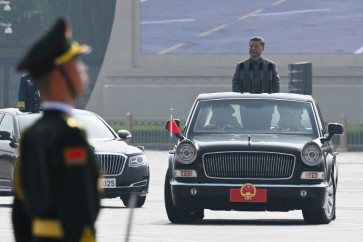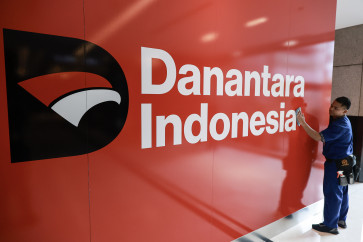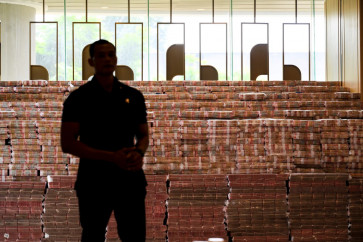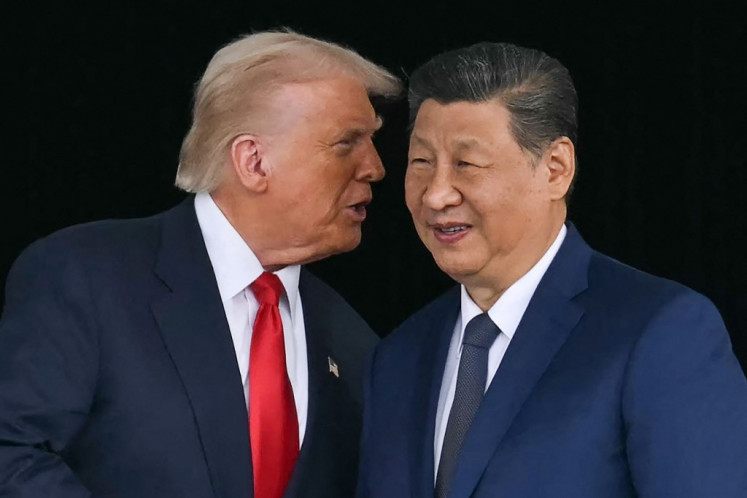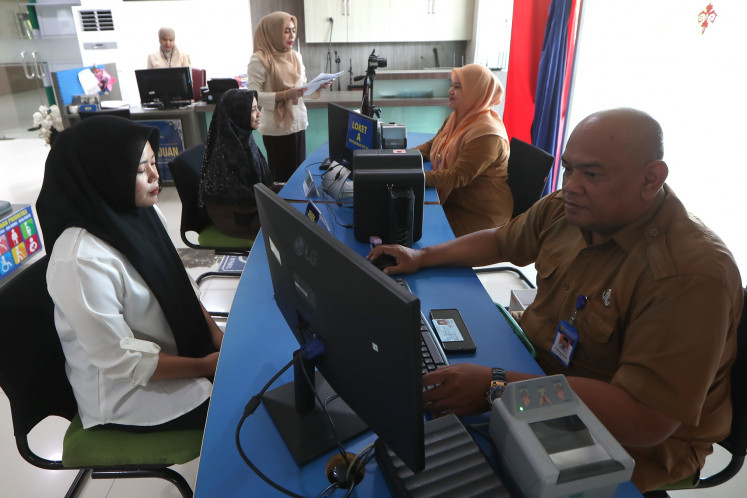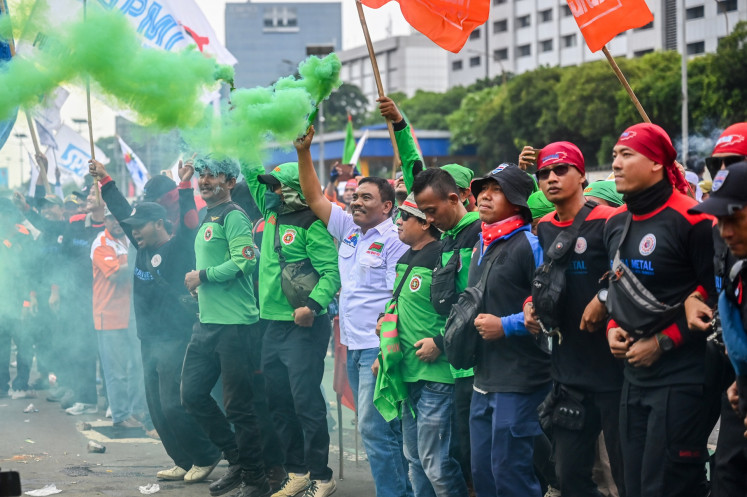Popular Reads
Top Results
Can't find what you're looking for?
View all search resultsPopular Reads
Top Results
Can't find what you're looking for?
View all search resultsEncountering Le Corbusier: A dialogue with modern architecture’s divisive figure
Bandung's Selasar Sunaryo Art Space and Jakarta's Kopi Manyar hosts a tribute introductory exhibition to Franco-Swiss architect Le Corbusier through recreated architectural models of his works.
Change text size
Gift Premium Articles
to Anyone
B
andung's Selasar Sunaryo Art Space and Jakarta's Kopi Manyar host a tribute introductory exhibition to Franco-Swiss architect Le Corbusier through architectural models of his works.
Very few people in the history of architecture are as polarizing as Charles-Édouard Jeanneret, also known as Le Corbusier. A complex figure with a daunting reputation, fraught with influences that transcended time and his notoriety for his urban vision and political views, Le Corbusier seems so far away yet still very close.
His imprint on an epochal style that has shaped modernist architecture gives him a sense of mosaic certainty that some people have likened to a hovering deity after Italian renaissance architect Andrea Palladio. Escaping from Le Corbusier’s influences is seemingly impossible.
Under the dread of logistical issues combined with the horrors of a narrow time frame for a traveling exhibition, Encountering Le Corbusier delivered an extensive yet constrained introduction to the architect's works, albeit ending abruptly.
The event was initiated by education platform Nenun Ruang in collaboration with Singaporean architecture firm RT+Q and hosted by Selasar Sunaryo Art Space (SSAS) and Kopi Manyar.
On a rocking boat
After being held by customs for two weeks when the architectural models arrived in Indonesia, the organizers were eventually faced with more than a handful of damaged ones and a shortened timeline as they were forced to delay the exhibition accordingly.
"Not all models are exhibited," said Artiandi Akbar, speaking to The Jakarta Post at Encountering Le Corbusier's Bandung exhibition, Pro Forma Le Corbusier, taking place at Selasar Pavilion on Oct. 19. Some of the models were 3D-printed, while others were conventionally made, showing a significant hand-made feel in their construction.
Artiandi, as one of the exhibition curators, noted that the set of exhibitions was based on two different narratives. "The ones exhibited at Kopi Manyar in Jakarta are the unbuilt works, while [the ones] here in Selasar Pavilion are the completed works, covering even his posthumous works," Artiandi said. He gestured toward the chronologically arranged models with one hand while his other tried to fix the position of his face mask.
The models, built by interns at Singapore-based architecture firm RT+Q as a rite of passage for years, totaled 100 after taking out the ones that arrived in Indonesia in shambles. "We received around 120 models, but some were practically ruined, while some were new ones and not in the catalog," chimed Heru Hikayat, SSAS's in-house curator.
RT+Q also displayed the models during LC121 Uncovering The Hand, an exhibition held at Universiti Malaya's Dewan Tunku Canselor in Kuala Lumpur. Rene Tan, half of RT+Q Architects, claimed that there were 125 models, but the firm had to settle with 121 due to the other four's "somewhat bad shape."
The models were Tan's way of acquiring new aspiring architects "with the diverse design legacy of perhaps the most encyclopedic architect of the 20th century. We amassed quite a few models over the years," said Tan in an interview with Malaysia's Options on June 21.
A learned game: The exhibition applies a periodization of Le Corbusier's works to signify changes in form, social conditions, or other things that significantly frame the chronology of Le Corbusier's activities and attitudes towards the world around him. (JP/Anindito Ariwandono) (JP/Anindito Ariwandono)Happenstance
While the models were arranged in an infinity symbol in the Malaysian exhibition, Pro Forma Le Corbusier featured a more straightforward, linear arrangement, ending with a model of Le Corbusier's gravesite alongside his wife's and five other models of his posthumous works. These included the Chandigarh Museum, Pavillon Le Corbusier, Firminy-Vert Stadium, Saddam Hussein Gymnasium/Baghdad Gymnasium and the Church at Firminy, France.
The main narrative of the set of exhibitions, Artiandi noted, was that "Behind the forms, an architectural model can tell a lot of stories, fascinating ones that can serve as lessons that we can study. The exhibition is ultimately an educational platform. Each of the models holds stories that explain the form. What was the political situation behind it? What's the personal circumstances, for instance, that moved along the 60 years of his career and reflected back and forth between the era and the forms."
"Have you read the text for the speech by Pak [Mr.] Widagdo?" Heru asked as he stood across the display table next to Artiandi.
"It's concise yet very detailed." Heru was referring to Widagdo, a senior interior designer responsible for many national-scale projects in Indonesia, who gave a speech for the exhibition's opening, which also happened to be the grand opening of SSAS's new space, Selasar Pavilion.
"Pak Widagdo also had first-hand experiences [with Le Corbusier's works]," Artiandi added. "During his studies in Germany, he had assignments where he had to draw Le Corbusier's recently finished buildings."
Selasar Pavilion also holds much meaning and sentiment for the owner, Bandung senior artist Sunaryo, concerning the tribute exhibition for the late architect. Designed by Sunaryo's brother, Siswadi Djoko Muryono, the space was erected a mere two months before the show opened, initially with the sole purpose of housing the exhibition.
Siswadi, who also happens to be one of Widagdo's students in his university days, gave the space and the exhibition a sense of full circle. The works of the late architect are housed inside a building instilled with principles of modern architecture indirectly handed down by Le Corbusier through Widagdo.
Acknowledging the divisiveness
"If we read his biography, I think that he was just a man of his time, where he responds to whatever it is around him at that time," said Artiandi, responding to Le Corbusier's frowned-upon parts of his reputation, including a considered disregard of existing cultural structures and alleged links to fascism. "We also noted the divisiveness of Le Corbusier's figure to Pak Sunaryo."
However, the artist is more focused on what people could learn from Le Corbusier's works and history. "I'm quite curious about Le Corbusier as he had a track record as an architect, a designer, a painter and a writer, but his figure is not that well-known in Indonesia," wrote Sunaryo in the exhibition's release.
"Le Corbusier's closest encounter with Indonesia was the Open Hand Monument, which he proposed to Jawaharlal Nehru as the Non-Alignment Movement's logo," Artiandi said. "The architect did not have any close involvement with us then."
He noted that the exhibition pointed out several of Le Corbusier's works that might be considered problematic through each model's narratives.
"Here, for instance," Artiandi said as he calmly moved toward the Ville Radieuse model and started reading the caption. "'Although radical, totalitarian and controversial, the concept influenced the development of the typology of high-density living spaces in the future’. Here, we point out that this was quite problematic at that time because he intended to destroy an area in the middle of Paris.
"But the context back then was that he knew what it was like to live in the Victorian era. [...] It's hard to bridge his thoughts back then with us in the present," Artiandi closed.
Machine à Habiter: Recreated architectural models of Le Corbusier's works, covering from built projects in various locations on the planet to concepts and study models arranged in a chronological order at Selasar Pavilion. (JP/Anindito Ariwandono) (JP/Anindito Ariwandono)Le Corbusier’s Un-Built Projects
Kopi Manyar
Jl. Central Bintaro No. 14 Bintaro, South Jakarta,
Oct. 20 - Nov. 6
Pro Forma Le-Corbusier
Selasar Pavillion (Selasar Pav.)
Jl. Bukit Pakar Timur 82 Bandung
Oct. 19 - Nov. 6

